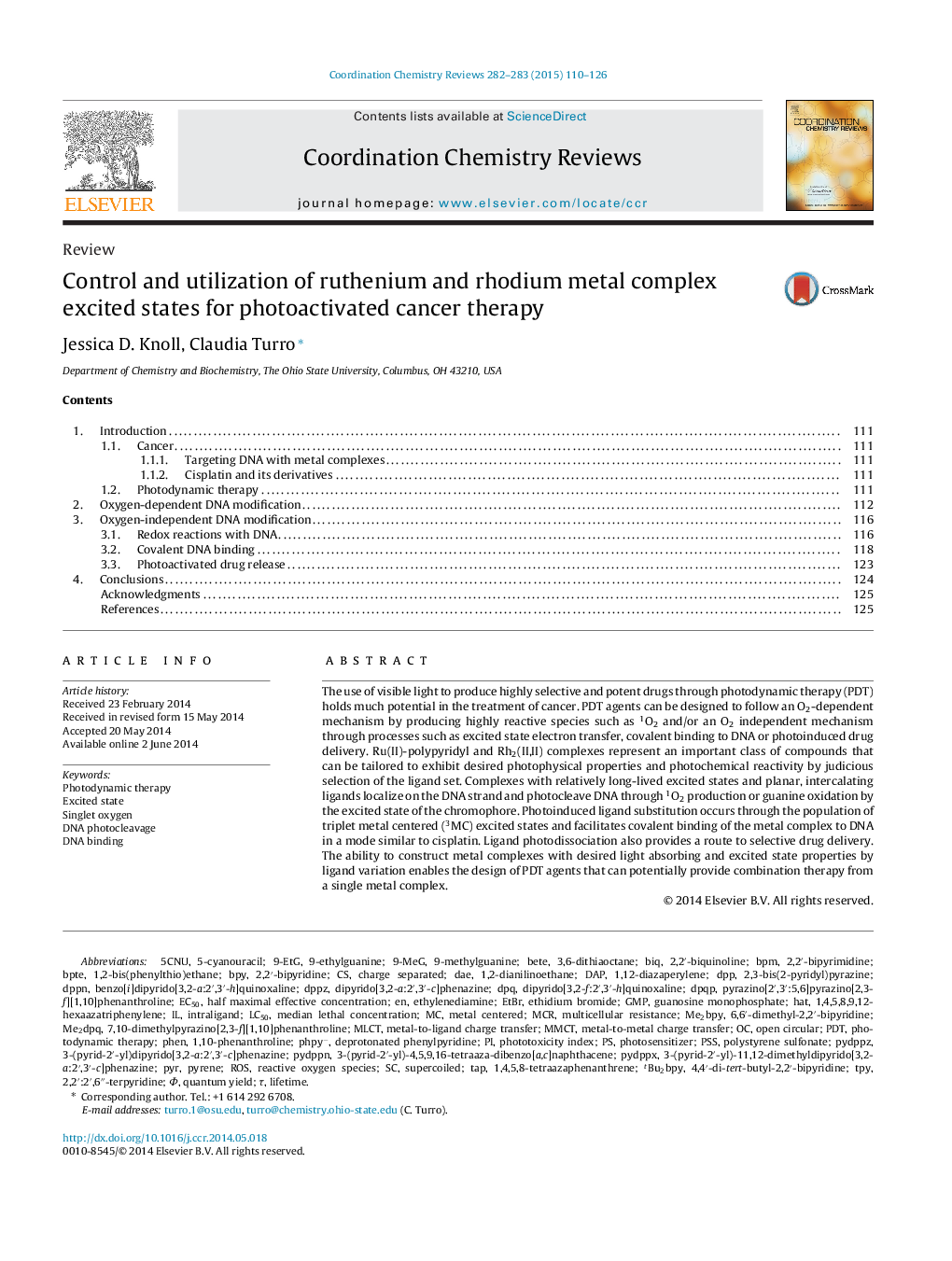| کد مقاله | کد نشریه | سال انتشار | مقاله انگلیسی | نسخه تمام متن |
|---|---|---|---|---|
| 1299931 | 1498735 | 2015 | 17 صفحه PDF | دانلود رایگان |
• Reactive excited states are tunable for desired properties and diverse bioactivity.
• DNA damage by 1O2 is enhanced by intercalative binding of the metal complex.
• The oxidizing power of excited state Ru and Rh complexes causes DNA damage.
• Photoactive cisplatin analogs covalently bind DNA via ligand photosubstitution.
• Photoinduced drug release results from population of metal-centered excited states.
The use of visible light to produce highly selective and potent drugs through photodynamic therapy (PDT) holds much potential in the treatment of cancer. PDT agents can be designed to follow an O2-dependent mechanism by producing highly reactive species such as 1O2 and/or an O2 independent mechanism through processes such as excited state electron transfer, covalent binding to DNA or photoinduced drug delivery. Ru(II)-polypyridyl and Rh2(II,II) complexes represent an important class of compounds that can be tailored to exhibit desired photophysical properties and photochemical reactivity by judicious selection of the ligand set. Complexes with relatively long-lived excited states and planar, intercalating ligands localize on the DNA strand and photocleave DNA through 1O2 production or guanine oxidation by the excited state of the chromophore. Photoinduced ligand substitution occurs through the population of triplet metal centered (3MC) excited states and facilitates covalent binding of the metal complex to DNA in a mode similar to cisplatin. Ligand photodissociation also provides a route to selective drug delivery. The ability to construct metal complexes with desired light absorbing and excited state properties by ligand variation enables the design of PDT agents that can potentially provide combination therapy from a single metal complex.
Figure optionsDownload high-quality image (124 K)Download as PowerPoint slide
Journal: Coordination Chemistry Reviews - Volumes 282–283, 1 January 2015, Pages 110–126
